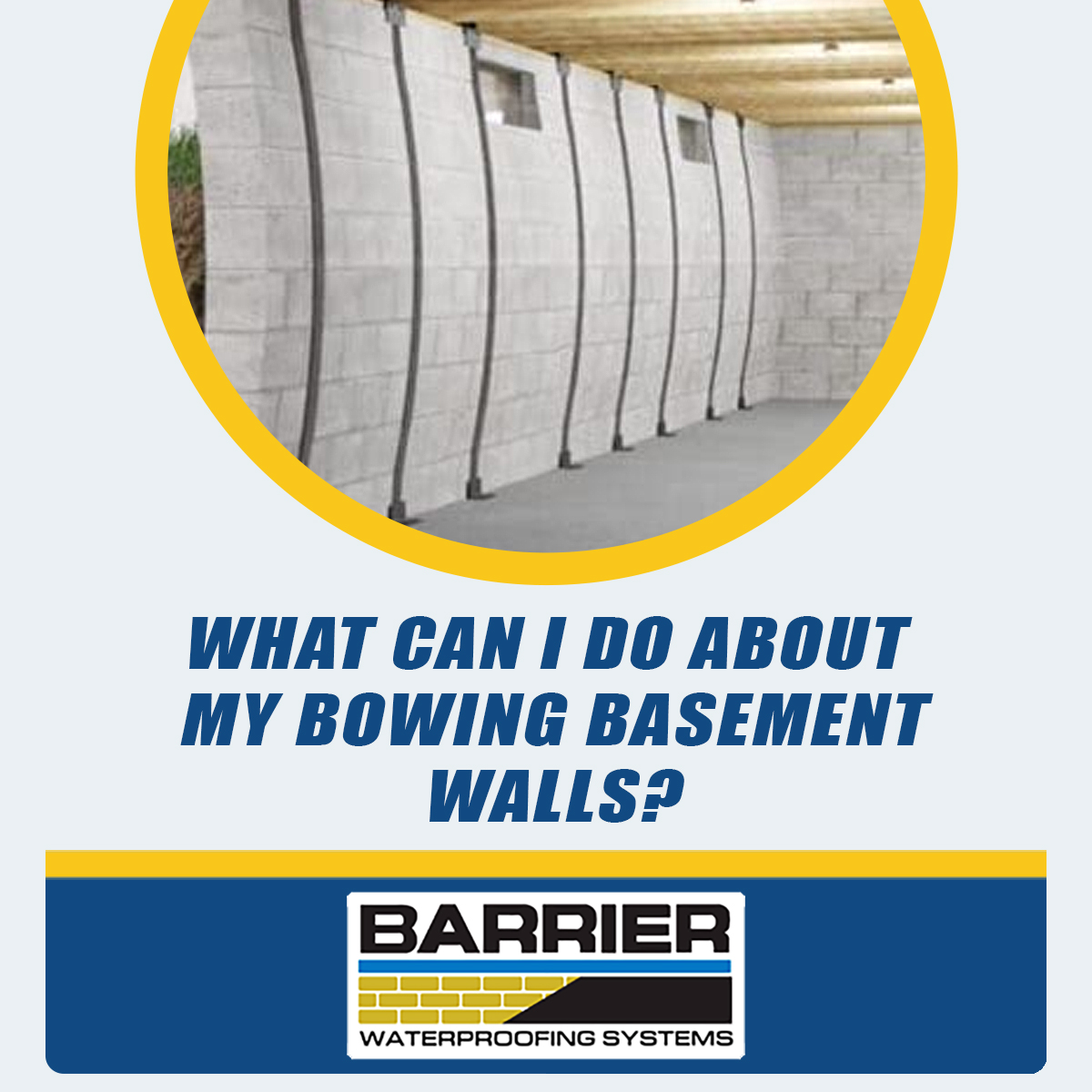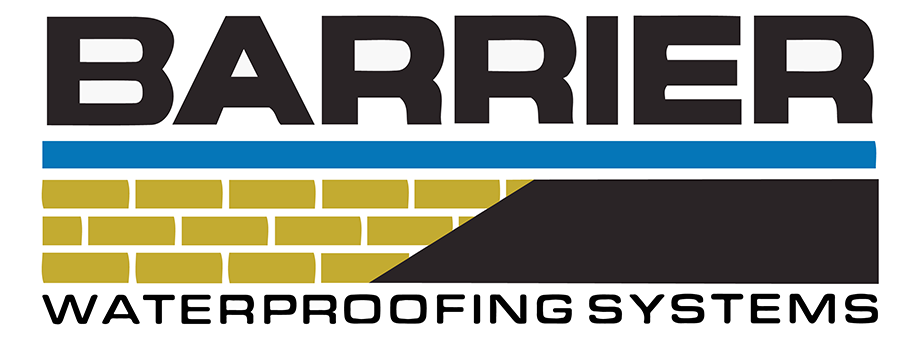Arched or bowing basement walls indicate a severe case of foundation collapse. In this case, the walls become distorted, curving inwards towards the basement living area. This problem is caused by basement walls weakening from pressure and vertical or horizontal cracks. Bowing basement walls can become covered with water stains, mold, fungus, or white efflorescence as a consequence of water leaks.
Vertical or horizontal cracks are often present but are mostly horizontal due to the direction of the curvature of the walls. A foundation wall cannot expand or flex in response to lateral earth pressure, so cracking and buckling problems sometimes occur. If you have arched foundation walls, or if your foundation walls are tilted or have other signs of inward movement, this could be caused by pressure being placed on your foundation and is cause for serious concern.
Over time, this constant (or at least seasonal) pressure builds up on basement walls and causes them to eventually crack and bend inward. Hydrostatic pressure is the most common cause of basement walls starting to buckle or swell inward and must be reduced to avoid damage. This is done through external grading and backfilling processes and drainage system installation. Soil that has become saturated and expanded creates the hydrostatic pressure on the foundation wall structure. It can cause the wall to move significantly inward over time and even cause one or more horizontal or stepped cracks to form along the inner and outer walls, further weakening their condition.
A weakened arch of a center wall can cause the mortar of a concrete block foundation wall to crack, but the damage doesn’t stop there! The problems only continue to grow, forming a large bulge or bend in the wall. All of these indications suggest that foundation failure is highly possible due to lateral earth pressure. Deformations are caused by excessive hydrostatic pressure from the outside pressing on the wall. If you are inside the basement, you would see a bulging or protruding of the wall towards where you are standing.
If the strength of the hydrostatic pressure exceeds the strength of the wall, it will crack or break. If the wall is filled with concrete, a common reinforcement process, the most common type of crack is diagonal.
Walls that deviate 6 inches or more from their original standing position are severely bent and often need to be replaced. Walls that curve further inward require a different and more expensive restoration method, which may include extensive excavation work on the outside. Wall anchors can eliminate many wall bending problems, including those that cause cracks, internal bulges, and sliding. Wall anchors and foundation repairs can solve your arch wall problems, but it is crucial to get high-quality help from a professional. Your local professional foundation repair experts as BARRIER can provide a solution for strengthening your home.
If you have arched basement walls, it’s best to have your home inspected by a professional foundation contractor who can pinpoint the cause and offer the right solution. Before contacting a foundation repair company just to get an idea of the cost of repairing an arched basement wall, it is helpful to measure the amount of deflection that has occurred. If you see bowing walls in your basement, or suspect that any of these other warning signs may be present, you should contact a qualified professional to help you assess the situation with accuracy.
Fortunately, foundation contractors can often implement several restoration options for issues like bowing and cracking. Even with proper construction, foundation repair may be required, like in situations where moisture is flooding the ground around the foundation. Cracked walls that are only repaired with injectable material can suffer from creep and long-term fatigue, leading to failure over time due to foundation movement. It is unsafe to reinforce a wall only where it is flexing the most, as the load is simply transferred to another part of the structure’s foundations. This can cause the wall to cut through at the bottom or collapse inward as a whole, posing a dangerous safety hazard!
If a wall warps, bends, or cracks form over time, our carbon fiber wall system reinforcements can transfer the load from the damaged wall to the new support structure. This product is a great choice when wall bending and warping need to be addressed.
Our innovative solutions solve the real cause of foundation problems and permanently stabilize dilapidated basement walls. By analyzing your foundation problems, our team of professionals can determine the best solution for your home’s bowing walls.
If space around the foundation is limited, we offer custom bowing basement wall repair options. We use wall anchors, steel beams, safety pins and carbon fiber straps to repair curved, sloped and cracked basement walls. It is our goal to restore the safety of your home’s structure!
We at BARRIER recommend stabilizing basement walls and, if possible, straightening them over time to avoid the need for expensive foundation replacements. Our expert solutions and high quality products can help you with foundation wall sagging and warping.
Whether your walls are just beginning to show signs of buckling or are already showing horizontal cracks or cuts, our team can install custom solutions, like steel beams, for cost-effective and proven preventive measures. Such solutions include basement wall braces, basement wall anchors, epoxy injections, etc. Combined with drainage system installation, your basement is sure to last for years to come! Improve the quality of your home and restore its integrity with the help of BARRIER Waterproofing Systems, today! Give us a call at (615) 257-1060 | (931) 536-1168 or visit our website to learn more.

